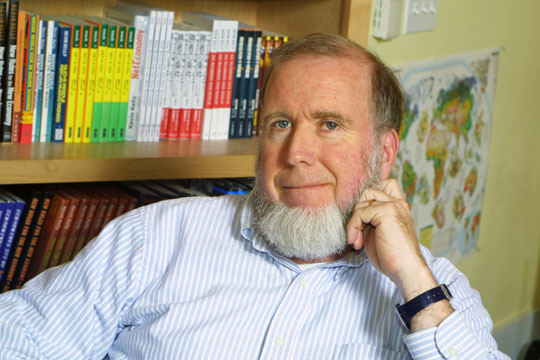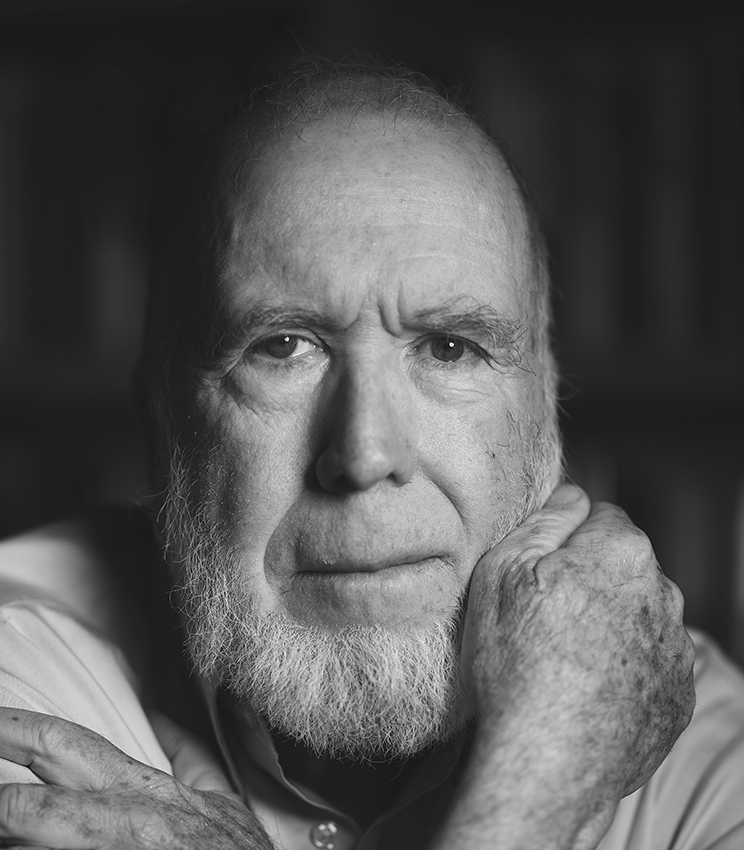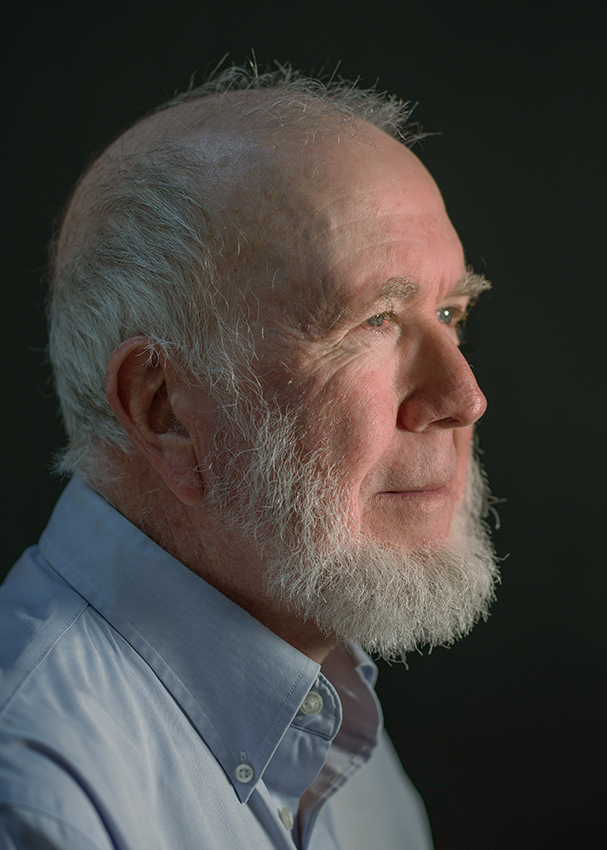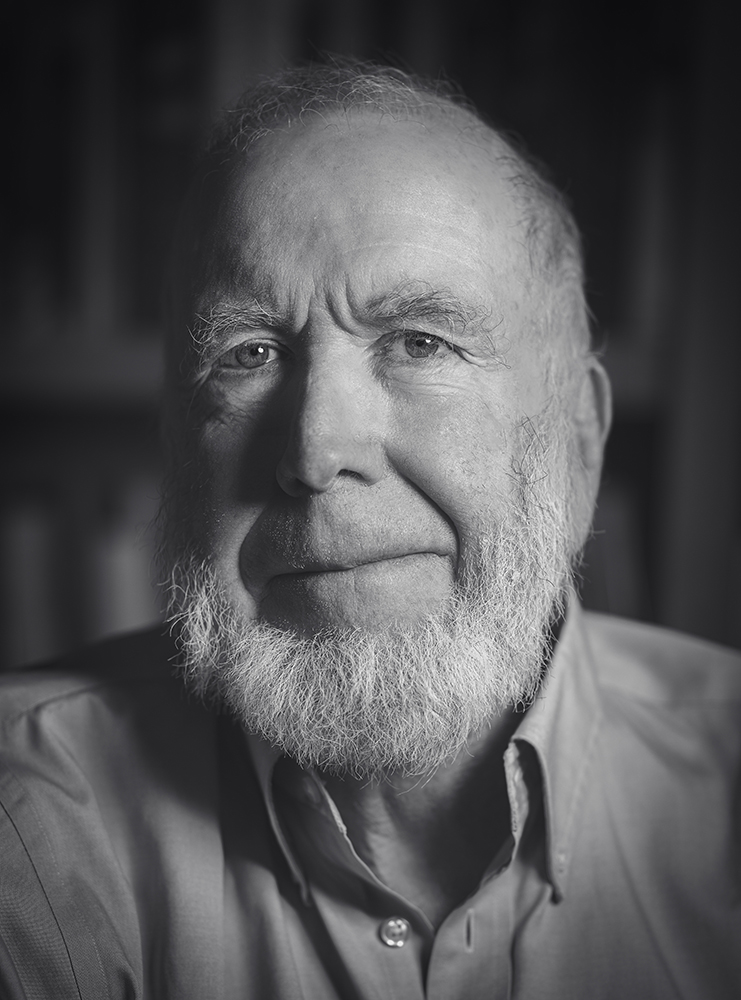Biography

Short version
Kevin Kelly is Senior Maverick at Wired magazine. He co-founded Wired in 1993, and served as its Executive Editor for its first seven years. His newest book is The Inevitable, a New York Times and Wall Street Journal bestseller. He is founder of the popular Cool Tools website, which has been reviewing tools daily for 20 years. From 1984-1990 Kelly was publisher and editor of the Whole Earth Review, a subscriber-supported journal of unorthodox conceptual news. He co-founded the ongoing Hackers’ Conference, and was involved with the launch of the WELL, a pioneering online service started in 1985. Other books by Kelly include 1) Out of Control, the 1994 classic book on decentralized emergent systems, 2) The Silver Cord, a graphic novel about robots and angels, 3) What Technology Wants, a robust theory of technology, and 4) Vanishing Asia, his 50-year project to photograph the disappearing cultures of Asia. He is currently co-chair of The Long Now Foundation, which is building a clock in a mountain that will tick for 10,000 years.
Long version
Kevin Kelly helped launch Wired magazine in 1993, and served as its Executive Editor for its first seven years. He is now Senior Maverick for Wired. In 1994 and 1997, during Kelly’s tenure, Wired won the National Magazine Award for General Excellence (the industry’s equivalent of two Oscars).
From 1984 to 1990 Kelly was publisher and editor of the Whole Earth Review, a journal of unorthodox conceptual news. The non-profit Whole Earth Review (formerly called Co-Evolution Quarterly) was a small, yet influential, subscriber-supported journal that consistently published trend-making topics years before other publications noticed them. Under Kelly’s direction and editorship, Whole Earth was the first consumer magazine to report on virtual reality, ecological restoration, the global teenager, Internet culture and artificial life (to name just a few early trends in the 1980s).
In the late 80s, Kelly conceived and oversaw the publication of four versions of the Whole Earth Catalogs. These were award-winning compendiums evaluating all the best “tools” available for self-education. (Over a million Whole Earth Catalogs have been sold.) The kind of tools reviewed include hardware, power tools, books, and software — anything that leverages power to individuals. In 1988 Kelly edited, published, and wrote much of Signal, a Whole Earth Catalog of personal communication tools, which evaluated the technologies of faxes, satellite TV, cellular, digital retouching, online systems and the whole emerging world of digital technology. Signal was a precursor to Wired magazine. In 2003 Kelly launched the Cool Tools website to review one tool daily. It is still going almost 20 years later, still recommending cool tools. In 2014 he published the best of the reviews as a large, oversized, 500-page Whole Earth Catalog inspired book in paper. The Cool Tools book was a #15 bestseller on Amazon. Starting in 2016, every Sunday, he and the Cool Tools team mail out Recomendo, a free one-page list of 6 very brief recommendations of cool stuff. It currently has 53,000 subscribers.
Kelly was a founding board member of the WELL, a very early online service started in 1985 by the Point Foundation (Kelly was director of Point from 1985-1990). The WELL is considered to be the pioneer in developing online communities and social networks, since it offered the first public access to the internet. Its early virtual community influenced other early online companies such as AOL.
As director of the Point Foundation, Kelly was involved in initiating several techno-culture experiments. He launched Cyberthon in 1990, the first round-the-clock virtual reality jamboree. This brought together for the first time, all existing virtual reality prototypes and allowed 400 invited guests to try them out. It was the first chance the lay public had to try VR. Kelly was also co-founder of the annual Hackers’ Conference, a weekend rendezvous which in 1984 brought together three generations of legendary computer programmers for the first time.
Kelly is the author of Out of Control: The New Biology of Machines, Economic and Social Systems, published in 1994. This wide-ranging book is about how machines, the economy, and all large human-made inventions are becoming biological. Fortune magazine called it “essential reading for all executives.” His second book, New Rules for the New Economy, was published in 1998. It outlines the new economics based in the digital world, introducing the importance of “free” prices. New Rules was a bestseller in the US and has been translated into German, Spanish, Italian, Greek, Chinese, Japanese, Korean, Dutch, Swedish, Portuguese and Estonian. What Technology Wants, published in 2010, offers the first theory for technology, defining the nature of this force in the universe. His most recent book is The Inevitable (2016), about the unavoidable big trends in the next 20 years.
Kevin Kelly’s writing has appeared in many national and international publications such as the New York Times, The Economist, Time, Harpers, Science, GQ, Wall Street Journal and Esquire. (A list of his articles is here.) Kelly wrote a monthly travel column for New Age Journal. In the early 1980s he published the first magazine devoted to walking, and ran a mail-order catalog, called Nomadics, specializing in budget travel around the world.
His photographs have appeared in LIFE and other national magazines. Before taking up the consequences of technology, Kelly was a nomadic photojournalist. One summer he rode a bicycle 5,000 miles across America. For most of the 1970s he was a photographer in remote parts of Asia, publishing his photographs in national magazines. After 50 years of traveling to 35 Asian countries he released his work documenting the disappearing cultures of Asia as a 3-volume opus, Vanishing Asia. It contains 1,000 pages and 9,000 photographs.
Kelly is a founding board member and co-chair of The Long Now Foundation, which is a group of individuals encouraging long-term thinking. The Long Now is building a clock and library that will last 10,000 years. The first 10,000-year clock is now being built inside a mountain in western Texas. The purpose of the project is to foster long-term responsibility.
Personal notes
A couple of years ago I was granted my 15 seconds of second-hand Hollywood fame. This short edited video clip from The Matrix Revisited (the making of the Matrix) has Keanu Reeves recounting how each actor had to read my book Out of Control (and 2 other books) before they could open the original script. There is a series of interviews with me on the “The Roots of the Matrix: Hard Science” disk in the 10-disk DVD Ultimate Matrix Collection series.
I have a screen credit for working on Minority Report in the concept stage. In 1999 Steven Speilberg holed up a bunch of futurists in a hotel on the beach and had us brainstorm what the year 2054 would be like in sufficient detail to film. He made our ideas look pretty good. In 2010 a number of publications gave high marks for the accuracy of the technological predictions in the film.
Matt Groening, the creator of The Simpsons, was inspired by my use of a Life Countdown Clock on my desktop computer, to use on an episode of Futurama. Of course his version was much funnier.
My educational background is minimal. I am a college drop out. I have no college or university degrees. Instead of going to university, I went to Asia. That was one of the best decisions I ever made. I traveled in the 1970s as a poor, solo photographer in the hinterlands and villages of Asia, between Iran and Japan. I traveled on about US$2,500 per year and came back with 36,000 slides. Here is a map of my travels in Asia.
I have a strong interest in religion. Some years ago I attended a two-year workshop on science and religion sponsored by the Templeton Foundation. My paper based on that experience is called Nerd Theology. On a more personal note, I told my story of a religious transformation many years ago to Ira Glass, host of This American Life, a podcast and radio series that features long narrative stories. My story of having six months to live is the second act called “Shoulda Been Dead“.
I live in Pacifica, California, a small coastal town just south of San Francisco. I work in a studio with a two-story library and a wall of curiosities. I am married to a biochemist and we have three wonderful (and now adult) children, and one grandchild.
Portraits
Any of these portraits can be used without providing attribution or requesting permission.
Additional Portraits by Christopher Michel
Please credit Christopher Michel when using any of these portraits.
Chronology
| 1952 | Born, in Pennsylvania, USA | |
| 1970 | Graduated from Westfield High School, Westfield NJ. | |
| 1971 | Dropped out of University of Rhode Island after one year. | |
| 1971 | Resident photographer at Apeiron Photography Workshop in Millerton, NY. | |
| 1972- 1979 | Independent photographer in remote parts of Asia. Roamed Japan, Korea, Taiwan, Philippines, Burma, Thailand, Bengladesh, India, Sri Lanka, Nepal, Pakistan, Afghanistan, and Iran. | |
| 1979 | Editor for Bell Helicopter employee newsletter in Tehran, Iran. | |
| 1979 | Became a Christian after conversion experience in Jerusalem. Rode bicycle 5,000 miles across continental US. During the crossing completed Bicycle Haiku, a collection of haikus and ink sketches in book form. | |
| 1980 | Hiked the Appalachian Trail from NJ to South Carolina with two brothers, Brian and Michael. | |
| 1980 | Initiated microphotography of the digestive system at the University of Georgia, Microbiology Department. Completed film with Dr. John Patton, entitled A Microscopic Look at Digestion, from Bandera Enterprises. | |
| 1981 | Launched Walking Journal, first American magazine dedicated to recreational walking. Sold in 1984. | |
| 1982 | Started and ran Nomadic Books, a mail order company specializing in hard-to-find budget travel information for world travelers. Sold in 1984. | |
| 1983- 1984 | Wrote monthly column on travel for New Age Journal. | |
| 1984 | Researched and wrote cover story for New Age Journal on the “Network Nation,” a very early report on online culture. | |
| 1984- 1990 | Edited last issue of Co-Evolution Quarterly and first issue of Whole Earth Review. Edited the Review for 6 years. Was acting-publisher of Whole Earth Catalogs after founder Stewart Brand left. Director of Point Foundation. | |
| 1985 | Co-initiator of the Hackers’ Conference, launched with Stewart Brand and organized by Ryan Phelan, and inspired by Steven Levy’s book. This seminal gathering brought together three generations of programming hackers for the first time. | |
| 1985- 1998 | Served on Board of Directors of the WELL from its inception until its sale to Salon. The WELL was an early, influential, and pioneering outpost in what later came to be called cyberspace. | |
| 1986 | Designed and published the Essential Whole Earth Catalog, a distillation of the best tools and books for self education. | |
| 1987 | Married Gia-Miin Fuh, a biochemist. | |
| 1988 | Conceived and edited Signal: Communication Tools for the Information Age, a compendium of digital resources and culture. | |
| 1988 | Daughter, Kaileen, born. | |
| 1989 | Created, together with Cheryl Nash, a 24-hour immersive jamboree in virtual reality, entitled Cyberthon — the first public access to all then-existing virtual reality experiments. | |
| 1990 | Daughter, Ting, born. | |
| 1990- 1994 | Researched and wrote Out of Control, the Rise of Neo-Biological Civilization. Reviewed in Fortune magazine as “A book that should be required reading for all executives….As entertaining as it is insightful.” | |
| 1992- 1999 | Founding executive editor of Wired magazine, which was conceived by Louis Rosetto and Jane Metcalf. First issue is launched January 1993. | |
| 1994 | Wired magazine wins National Magazine Award for General Excellence, the first time the award is granted to a start-up. | |
| 1995 | Charter board member of the Long Now Foundation, a non-profit dedicated to encouraging long-term views and generational thinking. | |
| 1996 | Son, Tywen, born. | |
| 1998 | Completed New Rules for the New Economy, a best selling book on the dynamics of the network economy. | |
| 1999 | As a client of the Leigh Bureau, made many presentations at high-tech conferences and corporate meetings world-wide. | |
| 2000 | Conceived and launched, with Stewart Brand and Ryan Phelan, the All Species Inventory, an effort to discover and catalog all living organisms in one generation. | |
| 2001 | Together with Stewart Brand, started up Long Bets, a mechanism to make predictions socially responsible. | |
| 2002 | Published Asia Grace, a book of about 600 photographs (and no words) of life in Asia. Launched asiagrace.com, a supplemental web site with stories and text for the book. Earned a “Special Thanks To” screen credit for the film Minority Report, as part of a group of futurists hired by director Steven Spielberg to imagine Washington DC in the year 2050. | |
| 2003 | Created the weekly email list and website Cool Tools. Wrote, designed and published a limited edition of reviews in book form, Cool Tools 2003. | |
| 2004 | Wrote, designed and published the book True Films: 100 Great Documentaries & Factuals. Appeared in “The Roots of the Matrix” portion of the Ultimate Matrix Collection DVD set, along with recommendation for Out of Control. | |
| 2005 | Co-host (with Stewart Brand) the monthly Seminar About Long-term Thinking, a public series based in San Francisco and broadcast on the web. Launched The Technium, a blog about the nature of technology. | |
| 2006 | Published True Films 2.0. Launched Street Use, a blog for vernacular technology. | |
| 2007 | All Species Foundation closes and hands off mission to the Encyclopedia of Life. | |
| 2008 | Redesign Cool Tools website. Published True Films 3.0 as ebook. | |
| 2009 | Launched The Quantified Self (with Gary Wolf). Homeschooled my son Tywen. | |
| 2010 | Completed and published WhatTechnology Wants, a book that offers a theory of technology. | |
| 2012 | Published The Silver Cord,Volume 1,a graphic novel started in 2003. The fictional story entails robots, drones, hacker spaces and angels, other kin, and astral travel. | |
| 2013 | Self-published the nearly 500-page book Cool Tools: A Catalog of Possibilities, the best of the Cool Tools website, which became a bestseller (#15) on Amazon. | |
| 2014 | Completed the Kickstarter-funded second volume of The Silver Cord. Published both volumes as a single large graphic novel art book. | |
| 2016 | Published The Inevitable, about the next 30 years of technology. Became a bestseller on The New York Times and Wall Street Journal lists. | |
| 2017 | Started the newsletter Recomendo with Mark Frauenfelder and Claudia Dawson; 6 brief recommendations every Sunday. | |
| 2018 | Published the compendium Recomendo book, containing 500 plus recommendations. | |
| 2019 | Compiled and published the book Four Favorite Tools, recounting the favorite tools of 150 notable makers. | |
| 2020 | Issued the second version of Recomendo: The Expanded Edition. Began a YouTube channel of Cool Tools and Try, a maker vlog. | |
| 2021 | Raised $600,000 from fans on Kickstarter to fund the publication of Vanishing Asia, a 1,000-page photobook of disappearing cultures in Asia. |


































